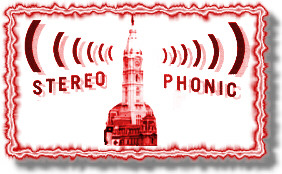

Here's an article we found in our archives dated from Friday, February 7, 1958. It was called "A New Experience in Radio Sound." No idea where it was published or who wrote it.

A new musical experience is available Sunday nights to Philadelphians who own separate AM and FM radios and they don’t have to be expensive hi-fi sets, either.
Early last month, WFIL began broadcasting stereophonic sound from 10 pm to 11 pm Sundays. This is sound that comes from two sources simultaneously, thus adding a dimension not possible to achieve when the sound is broadcast by conventional means.
To appreciate the difference, you’ve got to hear both, which you can readily do during the broadcasts simply by turning off one of the two sets. We have found the stereophonic effect quite thrilling, even though one of the radios we use is a small, beat-up table model.
If you happen not to fancy long-hair music, don’t be frightened off. The WFIL programs include semi-classical and musical comedy works. There also are some “stint” numbers, such as recordings of trains pulling into and out of a station, and bands marching. Close your eyes and you’ll think the train and bands are passing through your living room.
You needn’t be an electronics engineer to set up your radios for stereophonic sound. A spokesman for the station offers these suggestions.
Place your AM and FM receivers along the same wall, from six to twelve feet apart, with the AM to your left when facing it. Set the FM dial on 102.1, the AM at 560. As soon as the program comes on, try to equalize the volume of the two sets by listening to the announcer. When the music starts, this step is more difficult.
Then go sit down, preferably on the opposite side of the room, roughly equidistant from the sets. From here on in, just listen.
Naturally, the quality of your receivers will determine the quality of the music you hear, but quality sound should not be confused with effect. You can have a roomful of stereophonic sound using two inexpensive radios.
If you have sympathetic neighbors, here’s another suggestion. Don’t turn the volume down too low, much of the effect is lost if your sets are whispering.
Some of the musical numbers have much more impact than others. Hearing a full orchestra playing all-out for instance, is much more exciting than listening to a violin solo.
When a full symphony orchestra is heard, the sound seems to come from the direction of “the various instruments” customary positions in the ensemble, the first violins from the listener’s left, the cellos and percussions from the right.
WFIL plans to expand its stereophonic broadcasting soon. Another hour is planned early Sunday evening, and a third program on Saturdays. The station is also negotiating with the Metropolitan Opera Association to install separate microphones on stage so WFIL can present the regular Saturday afternoon opera broadcasts stereophonically.
They also are considering a radio-TV link. Television sound is FM, and can be teamed up with regular AM radio sound for stereo effects. On programs like “Voice of Firestone” which WFIL-TV, Channel 6 airs, would be a natural in this medium.
We’re not so sure rock ‘n’ roll music would be, but WFIL officials are toying with the idea of a trial run stereo simulcast of American Bandstand, which the station originates for the ABC television network.
A second Philadelphia station hopes to start stereo sound broadcast later this month. WFLN up until now an FM station only, has added an AM transmitter. It has announced that the five final Friday afternoon Philadelphia Orchestra concerts will be broadcast live, beginning late in March.
From the official archives of the Broadcast Pioneers of Philadelphia
© 2005, All Rights Reserved
The e-mail address of the Broadcast Pioneers of Philadelphia is pioneers@broadcastpioneers.com